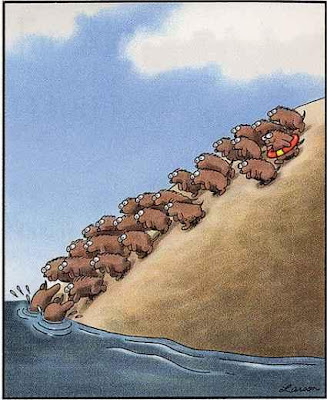Dysfunction
Trilogy Part A
Despite mounting evidence of the dysfunction being caused by Keynesian
policies, rhetoric in Europe and the United States is overwhelmingly turned
against austerity. Over three articles, the author will examine specific
examples of the dysfunction that has been caused by such government
intervention, and the very real economic pain being caused as a result with the
objective of dispelling the dangerous notion that higher government spending is
a victimless crime.
Here is a quick quiz: name a global industry that is as old as
antiquity, employs millions of people, withstood and indeed thrived with
technological change but perhaps most importantly of all with diverse supply
and demand dynamics is an industry that has never been cornered by any
particular group for very long in history.
If you thought the reference above was about shipping, well done. In
contrast if you thought it was about prostitution, well then, time for a cold
shower.
The typical cycle of shipping is as old as history and has always been
about two contrasting and virtually uncorrelated forces: firstly the
interaction of operations with risk, and secondly the boom-bust cycle. Western
readers will remember learning about the exploits of sea-faring Greeks and
other Mediterranean peoples as merchants far and wide seeking to profit from
trade with other countries. This continued into the times of Shakespeare
(examples include the Merchant of Venice and settled into
modern times as shipping became the moving force of global economies post World
War II. The advent of standardized containers during the Korean War and
thereafter proved a boon for global trade, and with it, improved the economic
fortunes of all countries involved.
For these 70 years or so of modern shipping, at least five boom-bust
cycles were visible as the effects of the cold war, the oil crisis, the
emerging-market crisis in the '80s, Scandinavia's sovereign debt crisis in the
'90s, and the decline in the industry in the first few years of this
millennium.
Every one of these cycles has been driven by a function of
overconfidence leading to an excess ordering of ships, and when a debt crisis
that disallowed loans to be refinanced or an economic downturn came, demand was
cut too quickly for the industry. More than once, a debt crisis came along with
an economic downturn but the global nature of the industry and continued
technology evolution always helped to pull the industry up.


















